BloostonLaw Telecom Update Published by the Law Offices of Blooston, Mordkofsky, Dickens, Duffy & Prendergast, LLP www.bloostonlaw.com | Vol. 11, No. 30 | July 30, 2008 |
Rep. Waxman Launches High-Cost USF Probe U.S. Rep. Henry Waxman (D-Calif.), Chairman of the House Oversight Committee, has released records reportedly showing that some of the largest telcos received more than $6 billion in recent years to subsidize service to rural and other high-cost areas, according to the Dallas Morning News. Two weeks ago, a Government Accountability Office (GAO) study concluded that the Universal Service Fund's (USF’s) high-cost program provides differing subsidies to carriers in the same market and may not ensure that its funds are being spent appropriately. Waxman has sent letters to 24 telcos that receive large subsidies asking a host of questions, including whether they take that money into account when building out their networks or during merger talks with other companies, according to Dow Jones. The Oversight Committee will examine how companies receiving large subsidies account for the money and disclose their activities to customers and regulators. Waxman wants to know whether any subsidies are used to deploy Internet services. Currently, universal service subsidies aren't intended for Internet subscribers, but carriers that transmit Internet traffic over phone lines could be subsidizing Internet traffic simply by improving their wires. Sen. Barack Obama (D-Ill.), the presumed Democratic nominee for president, argues that universal service fees should support broadband in underserved areas because rural customers already have quality voice service. Rep. Joe Barton (R-Texas) has called the program for high-cost areas "dreadfully inefficient." Barton introduced HR 6356 last month that would prohibit subsidies for wealthy areas and restrict them to one provider for a single high-cost area. The bill calls for a cap on the entire USF, and requires the FCC to institute a reverse auction program to implement support from the USF (BloostonLaw Telecom Update, June 25). Clients should contact us about these continuing threats to the high-cost program. Verizon Signals Willingness To Divest Spectrum, Honor Roaming Agreements; But Details Remain Sketchy BloostonLaw Has Drafted Petition Seeking Conditions on Merger BloostonLaw has drafted a petition requesting that the FCC condition any approval of the proposed Verizon-Alltel merger by imposing appropriate safeguards, including (1) a requirement that Verizon divest spectrum where overlap with ALLTEL wireless operations occur; (2) roaming agreement safeguards; and (3) safeguards against monopolization of handset availability. Clients interested in supporting this petition should contact us ASAP. Just before the original deadline for filing a petition, Verizon and ALLTEL have made things interesting, by signaling a willingness to divest spectrum in certain areas, and to honor certain existing roaming agreements. However, details remain sketchy and it does not appear that the giant carriers contemplate that the public or the rest of the industry gets any say on the particulars. As a result of these developments, the FCC has extended by 15 days the comment cycle in its proceeding regarding the proposed Verizon Wireless-ALLTEL merger. Petitions to deny are now due August 11, 2008, oppositions are due August 19, 2008, and replies are due August 26, 2008. Various groups had requested an extension of time, including Rural Telecommunications Group (RTG), supported by BloostonLaw and the National Telecommunications Cooperative Association; Consumers Union; Free Press; Media Access Project; and Public Knowledge. Specifically, Cellco Partnership d/b/a Verizon Wireless and its wholly-owned subsidiary AirTouch Cellular and Atlantis Holdings LLC had filed a series of applications seeking Commission approval of the transfer of licenses, authorizations, and spectrum manager and de facto transfer leasing arrangements through the transfer of control of subsidiaries of ALLTEL Corporation and partnerships in which ALLTEL has either controlling or non-controlling general partnership interests. As proposed, the transfer of control will take place as a result of a merger whereby Abraham Merger Corporation (Merger Sub), a newly-formed, wholly-owned subsidiary of Air-Touch, will merge with and into ALLTEL. At closing, the separate corporate existence of Merger Sub will cease, and ALLTEL will continue as the surviving corporation and as a wholly-owned subsidiary of AirTouch. The Applicants also request a declaratory ruling, pursuant to Section 310(b)(4) of the Communications Act, that the public interest would not be served by denying approval of the indirect foreign ownership in the licenses, authorizations, and spectrum manager and de facto transfer leasing arrangements held by the post-transaction ALLTEL Subsidiaries and Partnerships. On July 22, 2008, Verizon Wireless submitted an ex parte letter outlining 85 cellular markets, in which both Verizon Wireless and ALLTEL currently provide service, that, as a result of discussions with the Department of Justice (DOJ), it has committed to divest. Specifically, Verizon Wireless is “committing to divest overlapping properties comprising the entire states of North Dakota and South Dakota, as well as overlapping properties comprising partial areas within 16 additional states: California, Colorado, Georgia, Idaho, Illinois, Kansas, Minnesota, Montana, Nevada, New Mexico, North Carolina, Ohio, South Carolina, Utah, Virginia and Wyoming.” Clients wanting a list of the specific cellular markets within each state that may be subject to divestiture can contact the firm. With regard to these divestitures, Verizon Wireless states that “[t]he specific spectrum, operations and other assets that will be divested in each market will be determined as part of ongoing discussions with the Department of Justice.” Thus, Verizon and ALLTEL opposed any extension of the petition deadline, signaling their belief that there is no need for public input on these last minute changes to the merger proposal. Further, Verizon Wireless notes that it has “received several inquiries about the impact of the transaction on CDMA and GSM roaming agreements that ALLTEL has with regional, small and/or rural carriers.” Verizon Wireless makes the following commitments to regional, small and/or rural wireless providers with which it has entered into roaming agreements: “First, each such regional, small and/or rural carrier that has a roaming agreement with ALLTEL will have the option to keep the rates set forth in that roaming agreement in force for the full term of the agreement, notwithstanding any change of control or termination for convenience provisions that would give Verizon Wireless the right to accelerate the termination of such agreement. Second, each such regional, small and/or rural carrier that currently has roaming agreements with both ALLTEL and Verizon Wireless will have the option to select either agreement to govern all roaming traffic between it and post-merger Verizon Wireless.” However, Verizon does not address what will happen once the existing roaming agreements expire. Nor does Verizon address the dominant position it will acquire with regard to handset manufacturers as a result of the merger, to the possible detriment of rural carriers that already suffer from a slow “trickle down” of new handsets. While Verizon’s letter offers some promise that the divestiture and roaming issues will be at least partially addressed, many important details remain unclear. Therefore BloostonLaw is proceeding with petitions on behalf of interested clients. If you think that your company will be adversely affected by the proposed merger, you should contact the firm ASAP. BloostonLaw contacts: Ben Dickens, Gerry Duffy, John Prendergast, and Mary Sisak. AT&T’s Petition On IP/PSTN Traffic Has Implications For Intercarrier Comp. Reform Comments due August 14, Replies due August 25. AT&T has filed a petition for interim declaratory ruling and limited waivers regarding access charges, in the event the FCC does not act on comprehensive intercarrier compensation reform. The company states that it is providing the FCC with a blueprint for achieving a core goal of the Missoula Plan—reducing and unifying terminating intercarrier compensation charges through rate re-balancing and targeted universal service support by the end of 2008, consistent with the Commission’s publicly stated timeline for adopting an order addressing comprehensive reform. In its July 17 petition, AT&T asks the Commission to “clarify the applicability of access charges to inter-exchange” Internet protocol/public switched telephone network (IP/PSTN) traffic. In addition, AT&T seeks “limited waivers of [the Commission’s] rules governing [subscriber line charges] and switched access charges.” As noted, the relief AT&T requests has two parts. First, AT&T seeks a declaratory ruling (or waiver) that would enable it to assess intrastate terminating access charges on IP/PSTN traffic where its intrastate terminating access rates are at parity with its interstate rates. The second part of AT&T’s petition involves states where AT&T must affirmatively reduce existing intrastate terminating access rates to interstate levels in order to be eligible for the preceding declaratory ruling (or waiver) regarding the applicability of access charges to IP/PSTN traffic (i.e., approximately half of AT&T’s states). Here, AT&T seeks two mechanisms that would allow AT&T (and any other willing carriers) to increase certain interstate rates, within prescribed limits, to offset AT&T’s foregone intrastate access revenues. Those mechanisms are—first, to subscriber line charges (SLCs), and second, if necessary, to interstate originating access charges. SLC Caps: AT&T requests a limited waiver of the rules that prevent increasing its SLCs up to (but not above) the existing $6.50 for residential and single-line business lines; $7.00 for non-primary residential lines; and $9.20 for multi-line business lines. AT&T acknowledges that those levels are reasonable and have been affirmed by the courts. It states that any increases in the SLCs would be limited “to only the aggregate amount necessary to offset, on a dollar-for-dollar basis, the corresponding aggregate amount by which AT&T reduces its intrastate terminating access revenues to achieve parity.” Interstate Originating Access Charges: Because AT&T may not be able to achieve access charge parity in certain states using SLC increases alone, the petition said, AT&T requests a waiver so that after first exhausting the “headroom” created by the SLC waiver (the difference between AT&T’s current SLC rates and the SLC caps), AT&T would then be allowed to increase the interstate originating switched access component of its Average Traffic Sensitive (ATS) rate up to (but not above) a level that would result in the $0.0095 rate approved in the Calls Order for low-density price cap carriers. If granted, the result would be that all inter-exchange traffic (including IP/-PSTN traffic and traditional circuit-switched PSTN-to-PSTN traffic) terminating on AT&T’s network would be subject to terminating access charges set at interstate rate levels, while all “local” traffic (including IP/PSTN traffic would be subject to reciprocal compensation arrangements. Comments in this WC Docket No. 08-152 proceeding are due August 14, and replies are due August 25. BloostonLaw contacts: Ben Dickens, Gerry Duffy, and Mary Sisak. Cell Phone-Cancer Warning Re-ignites Health Debate The debate over the possible link between cell phones and cancer has heated up again thanks to an unusual and unprecedented warning issued by Dr. Ronald B. Herberman, director of the University of Pittsburgh Cancer Institute, a prominent cancer research institute. Dr. Heberman issued his warning to faculty and staff, and told them to limit cell phone use. Another researcher likened cell-phone use to "play[ing] Russian roulette with your brain," according to The Associated Press. These new warnings contradict numerous scientific studies that do not find a link between increased tumors and cell phone use. And they contradict the U.S. Food and Drug Administration (FDA), which concludes that the cancer risk from cell phones “is probably very small.” But, as AP reports, Herberman is basing his alarm on early, unpublished data. He says it takes too long to get answers from science and he believes people should take action now — especially when it comes to children. "Really at the heart of my concern is that we shouldn't wait for a definitive study to come out, but err on the side of being safe rather than sorry later," Herberman said. Herberman's advice is sure to raise concern among many cell phone users and especially parents, according to AP. In the memo he sent to about 3,000 faculty and staff last Wednesday, he says children should use cell phones only for emergencies because their brains are still developing. Adults should keep the phone away from the head and use the speakerphone or a wireless headset, he says. He even warns against using cell phones in public places like a bus because it exposes others to the phone's electromagnetic fields. The issue that concerns some scientists — though nowhere near a consensus — is electromagnetic radiation, especially its possible effects on children. It is not a major topic in conferences of brain specialists, the AP said. AP added: A 2008 University of Utah analysis looked at nine studies — including some Herberman cites — with thousands of brain tumor patients and concludes "we found no overall increased risk of brain tumors among cellular phone users. The potential elevated risk of brain tumors after long-term cellular phone use awaits confirmation by future studies." Studies last year in France and Norway concluded the same thing. Nevertheless, the Herberman memo cites a growing body of literature purporting to link long-term cell phone use to possible adverse health effects including cancer. "Although the evidence is still controversial, I am convinced that there are sufficient data to warrant issuing an advisory to share some precautionary advice on cell phone use," he wrote in his memo. A driving force behind the memo was Devra Lee Davis, the director of the university's center for environmental oncology, according to The AP. "The question is do you want to play Russian roulette with your brain," she said in an interview with The AP that she did from her cell phone. "I don't know that cell phones are dangerous. But I don't know that they are safe." Of concern are the still unknown effects of more than a decade of cell phone use, with some studies raising alarms, said Davis, a former health adviser in the Clinton Administration. She told The AP 20 different groups have endorsed the advice the Pittsburgh cancer institute gave, and authorities in England, France and India have cautioned against children's use of cell phones. According to The AP, Herberman and Davis point to a massive ongoing research project known as Interphone, involving scientists in 13 nations, mostly in Europe. Results already published in peer-reviewed journals from this project aren't so alarming, but Herberman is citing work not yet published, The AP said. The AP also noted that the published research focuses on more than 5,000 cases of brain tumors. The National Academy of Sciences in the U.S., which isn't participating in the Interphone project, reported in January that the brain tumor research had "selection bias." That means it relied on people with cancer to remember how often they used cell phones. It is not considered the most accurate research approach. Further The AP noted that the largest published study, which appeared in the Journal of the National Cancer Institute in 2006, tracked 420,000 Danish cell phone users, including thousands that had used the phones for more than 10 years. It found no increased risk of cancer among those using cell phones. And a French study based on Interphone research and published in 2007 concluded that regular cell phone users had "no significant increased risk" for three major types of brain tumors, The AP said. It did note, however, that there was "the possibility of an increased risk among the heaviest users" for one type of brain tumor, but that needs to be verified in future research. Earlier research also has found no connection between cell phones and cancer, The AP said. It added that Joshua E. Muscat of Penn State University, who has studied cancer and cell phones in other research projects partly funded by the cell phone industry, said there are at least a dozen studies that have found no cancer-cell phone link. He said a Swedish study cited by Herberman as support for his warning was biased and flawed. "We certainly don't know of any mechanism by which radio-frequency exposure would cause a cancerous effect in cells. We just don't know this might possibly occur," Muscat told The AP. Cell phones emit radio-frequency energy, a type of radiation that is a form of electromagnetic radiation, according to the National Cancer Institute. Though studies are being done to see if there is a link between it and tumors of the brain and central nervous system, there is no definitive link between the two, the institute says on its Web site. "By all means, if a person feels compelled that they should take precautions in reducing the amount of electromagnetic radio waves through their bodies, by all means they should do so," said Dan Catena, a spokesman for the American Cancer Society. "But at the same time, we have to remember there's no conclusive evidence that links cell phones to cancer, whether it's brain tumors or other forms of cancer." CTIA-The Wireless Association notes on its Web site: “If there is a risk from these products--and at this point we do not know that there is--it is probably very small. But if you are concerned about avoiding even potential risks, you can take a few simple steps to minimize your exposure to radio-frequency energy (RF). Since time is a key factor in how much exposure a person receives, reducing the amount of time spent using a wireless phone will reduce RF exposure. “If you must conduct extended conversations by wireless phone every day, you could place more distance between your body and the source of the RF, since the exposure level drops off dramatically with distance. For example, you could use a headset and carry the wireless phone away from your body or use a wireless phone connected to a remote antenna,” according to CTIA. To the extent that Dr. Herberman’s warning raises concerns about digital cell phones (which use much less power than the older analog cell phones), one would wonder whether the same concerns are raised by the prolific use of cordless phones and personal computers by the public, as a substitute for the old-fashioned “wired” telephone. Cordless phones and personal computers both radiate RF energy. BloostonLaw contacts: Hal Mordkofsky, John Prendergast, Cary Mitchell, and Bob Jackson. FCC APPARENTLY POISED TO “PUNISH” COMCAST FOR BLOCKING INTERNET TRAFFIC: At least three FCC votes have been cast in favor of punishing Comcast for blocking subscribers' Internet traffic, according to The Associated Press. Comcast allegedly violated FCC principles that guarantee customers open access to the Internet. And the Commission has scheduled the matter for consideration at its August 1 open meeting. According to AP, the three votes in favor of punishing Comcast are FCC Chairman Kevin Martin, along with Commissioners Michael Copps and Jonathan Adelstein. The complaint against Comcast is that the company had blocked Internet traffic among users of a certain type of "file sharing" software that allows them to exchange large amounts of data. According to the AP report, Martin has said the “punishment” will not include a fine. He also said it will require Comcast to stop its practice of blocking; provide details to the commission on the extent and manner in which the practice has been used; and to disclose to consumers details on future plans for managing its network going forward. "I continue to believe that is imperative that all consumers have unfettered access to the Internet," Martin said in a statement released early Saturday morning, according to AP. "I am pleased that a majority has agreed that the Commission both has the authority to and in fact will stop broadband service providers when they block or interfere with subscribers' access." The FCC approved a policy statement in September 2005 that outlined a set of principles meant to ensure that broadband networks are "widely deployed, open, affordable and accessible to all consumers." The principles, however, are "subject to reasonable network management." Meanwhile, the FCC will consider two other items at its scheduled August 1 open meeting: (1) a Report & Order concerning regulatory fees for Fiscal Year 2008 and a Further Notice of Proposed Rulemaking seeking comment on regulatory fee issues; and (2) a Memorandum Opinion & Order and Declaratory Ruling considering the transfer of control of licenses and authorizations from Rural Cellular Corporation to Verizon Wireless. On July 30, the FCC will hold a public En Banc hearing in Brooklyn, N.Y., on Public Safety Interoperable Communications and the 700 MHz D-Block Proceeding. BloostonLaw contacts: Hal Mordkofsky, Ben Dickens, Gerry Duffy, and John Prendergast. NEXTWAVE SELLING OFF AWS SPECTRUM: NextWave Wireless, a subsidiary of NextWave, in an 8-K filing with the Securities and Exchange Commission (SEC), has revealed that it has agreed to sell approximately 63% of its total Advanced Wireless Spectrum According to various press reports, NextWave plans to sell certain AWS licenses to T-Mobile for $97.5 million. The geographic areas covered by the licenses include markets in Pennsylvania, Maryland, Delaware, Virginia, West Virginia, Kentucky, Ohio, Tennessee, Georgia, North Carolina, Alabama, Arkansas, Florida, Louisiana, Mississippi, Missouri, Oklahoma, Kansas, California, Puerto Rico, and the U.S. Virgin Islands. NextWave has also entered into separate agreements to sell certain parts of its AWS licenses to Atlantic Wireless, ACS (Alaska) Wireless and MetroPCS, respectively. The geographic areas covered by the licenses include markets in Indiana, Kentucky, Illinois, Ohio, Alaska, Georgia and Florida. In all, the agreements call for NextWave to sell 599 million MHz-pops of AWS spectrum at an average price of $0.25 per MHz-pop. Pursuant to the terms of NextWave's 7 percent Senior Secured Notes, $75 million of the proceeds from the sale will be deposited into a restricted cash collateral account and $75 million will be used to redeem a portion of the Notes. After the sale, the company will possess 348 million MHz-pops of AWS spectrum primarily in New England, Florida, and California. NextWave acquired all of its AWS licenses for a total of $115.5 million, or $0.12 per MHZ-pop, at an FCC auction held in 2006. Thus, this AWS spectrum has doubled in value since it was won in Auction 66 two years ago. NextWave's remaining U.S. spectrum assets include 2.8 billion MHz-pops of 2.3 GHz WCS spectrum, 972 million MHz-pops of 2.5 GHz BRS/EBS spectrum, and 348 million MHz-pops of AWS spectrum. In addition the company has 5.9 billion MHz-pops of spectrum in Europe, Canada, and South America, according to Fierce Wireless, and other press reports. BloostonLaw contacts: Hal Mordkofsky, John Prendergast, and Cary Mitchell. |







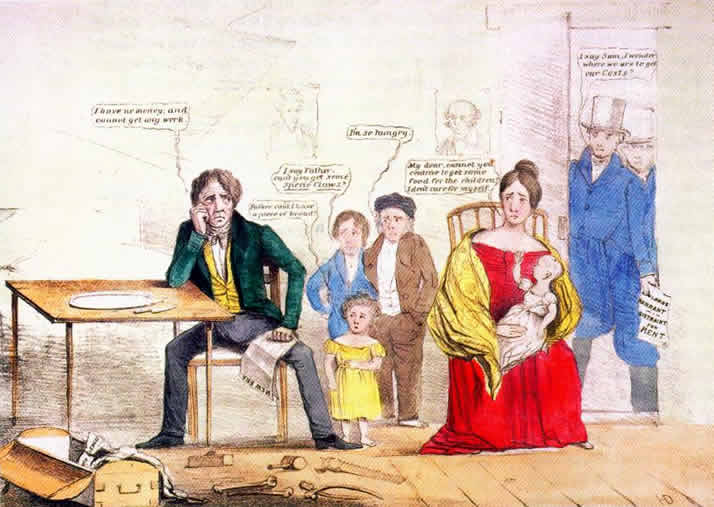










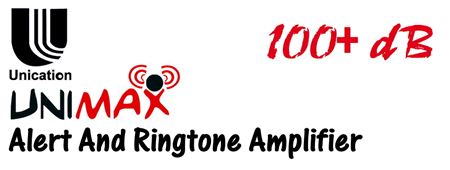

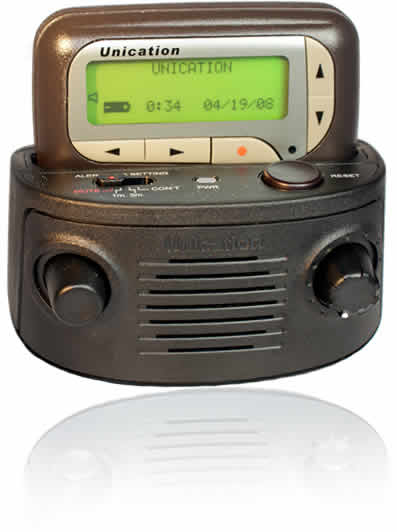

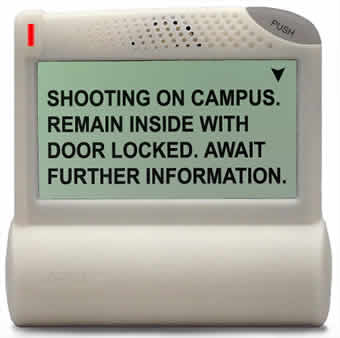

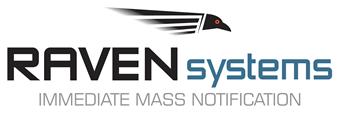

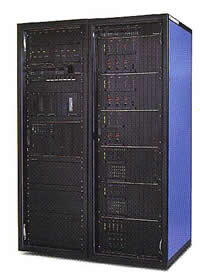
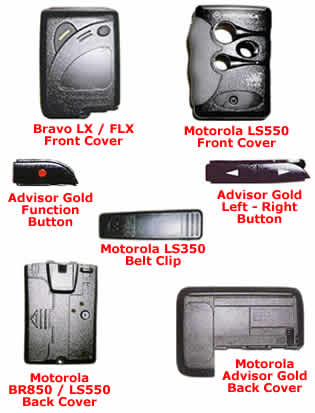


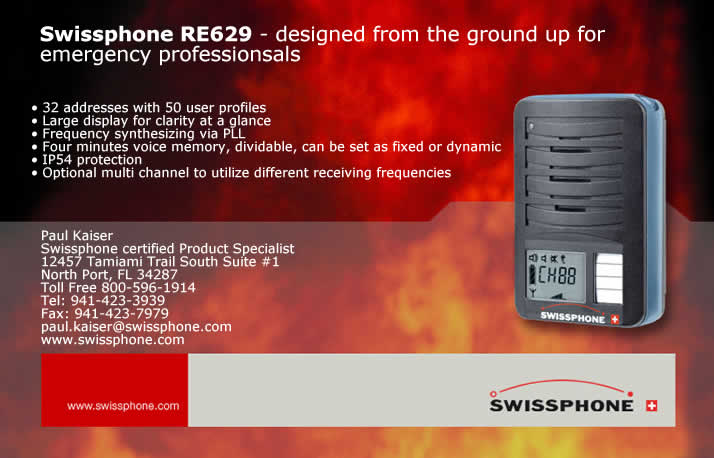
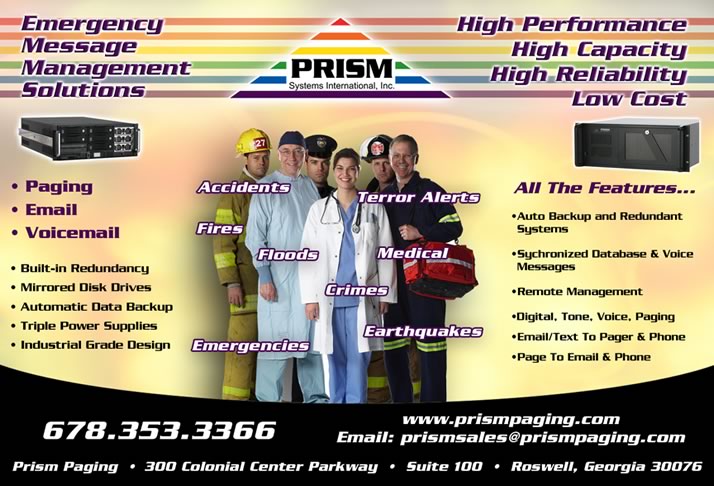


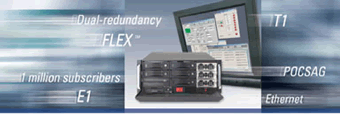

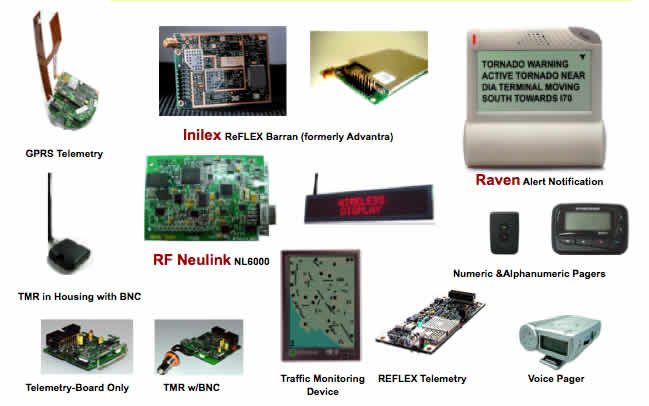

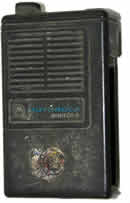
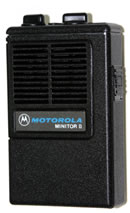




 ATM300
ATM300 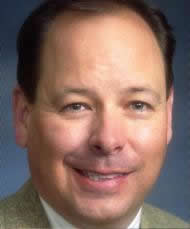



















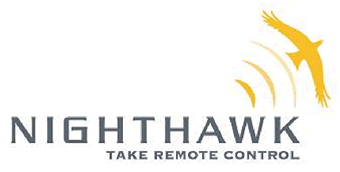






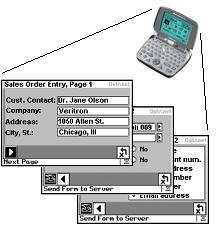 If you see someone in the field (like salespeople, technicians, and delivery people) using paper forms, their company could probably save a pile of money, and get much better timeliness, accuracy and efficiency, by using converting to Outr.Net's Wireless Forms. Custom applications for as little as $995, delivered in just a few days.Outr.Net has a web page on Wireless Forms for Timeports at:
If you see someone in the field (like salespeople, technicians, and delivery people) using paper forms, their company could probably save a pile of money, and get much better timeliness, accuracy and efficiency, by using converting to Outr.Net's Wireless Forms. Custom applications for as little as $995, delivered in just a few days.Outr.Net has a web page on Wireless Forms for Timeports at: 


